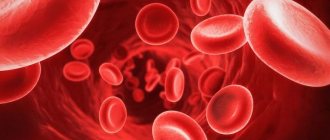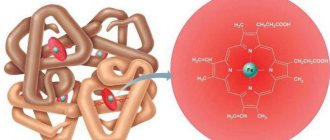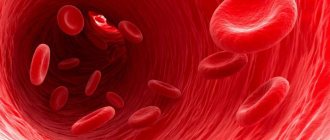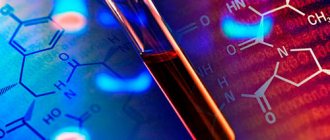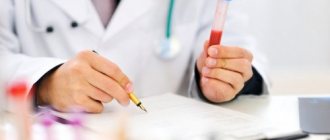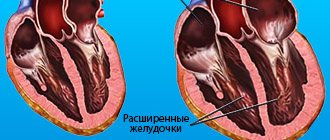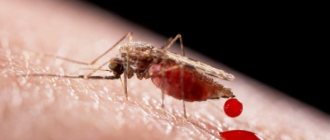Formed blood cells ensure the normal functioning of the entire body. Some of them are involved in adequate coagulation, which is necessary as part of the correction of injuries and damage (recovery from them).
Others stabilize the functioning of local and general immunity. Still others transport oxygen and provide tissues and systems with the required amount of useful compounds. There are many options.
Platelets are one of the formed cells. Their task is to ensure adequate coagulation and closure of blood vessels in case of mechanical damage. But not only.
Disturbances in the synthesis of these structures or insufficiency of their functional activity cause disorders of varying degrees of severity. From the typical tendency to massive bleeding to persistent disorders of the arteries and veins, including an increase in their fragility and a proportional decrease in resistance to stress and elasticity in general.
When determining the presence of a particular disorder, it is necessary to seek medical help. Exactly the same can be said about any suspicion of pathological processes.
The role of platelets in the body
The main functions of red blood cells are as follows:
- Providing primary hemostasis. As soon as there is a violation of the anatomical integrity of the body’s tissues and blood vessels, these structures, as a result of a complex process, are concentrated in the affected area. Adhesion (sticking) begins, and then aggregation (clumping).
A primary plug is created, which becomes a kind of valve that prevents blood from leaving the vessel. This is the main mechanism for the primary stop of the pathological process.
However, it is not permanent; purely physical measures to prevent the release of blood are not enough in such a volume. Another mechanism is also involved.
- The so-called secondary hemostasis. Provides active release and stimulation of the synthesis of special substances called coagulation factors. This includes several connections that share basic functionality.
The production of such leads to rapid blood clotting and restoration of normal functioning of the body. In this case, hemodynamics (blood flow) is not disturbed, the process is balanced by the anticoagulative (anti-clotting) effect of other substances. Therefore, the blood remains liquid, despite all the changes that occur.
- The third function concerns ensuring the normal condition of blood vessels. Platelets in some way determine the stable state of the endothelium - the inner lining of capillaries, veins and arteries.
Objectively, when solving this problem, the permeability of the blood supply structures is reduced in order to avoid the spontaneous formation of hematomas, including large ones. This function is carried out in parallel with others.
Platelets play a role in hemostasis and indirectly affect the condition of blood vessels, the speed and quality of nutrition of all body tissues. If at least one function is disrupted, significant distortions begin in the activity of all blood systems.
Also, deviations in laboratory parameters are detected almost immediately, as the body tries to compensate for functional disorders.
There is also a plus here, since diseases quickly make themselves known with changes that are easy to track.
What are platelets in general terms?
Platelets are one of the formed elements of blood, the progenitors of which are megakaryocytes, the largest cells in the bone marrow. About 10 thousand small platelets are produced from one giant cell, which subsequently circulate throughout the circulatory system. A very serious role in the body is assigned to these blood cells; the most important purposes for which platelets in the blood are responsible are:
- keeping blood in liquid form;
- participate in blood clotting processes;
- eliminate damage and heal blood vessels, “sticking” to injured areas;
- participate in the mechanism of stopping bleeding.
Based on the above responsibilities of platelets, it becomes clear that their insufficient amount in the blood can be a rather dangerous condition, in this case the body has no protection against bleeding and large blood loss. In addition, the vessels are deprived of natural nutrition and become fragile and thin. In medicine, this disease is called thrombocytopenia.
No less alarming is the condition when platelets in the blood are increased, this means that there is an extremely high risk of formation of multiple clots, i.e. blood clots, in the blood vessels, as a result of which they become blocked, the movement of nutrients and oxygen into organs and tissues is hampered, and swelling occurs limbs, and there is also a high probability of ischemia and heart attack. With this condition of venous blockage, a person develops thrombocytosis.
Tables of platelet norms according to age
The normal platelet count in the blood is 100-400 x10^9/l. both for women and for men, but the values are conditional, deviations up or down are possible, depending on the specific situation. They are determined, among other things, by gender, age and the current state of human health; hormonal phenomena, such as gestation, also have a huge impact.
Among women
| Age (years) | Levels in units per liter |
| 12-16 | 100-250 |
| 17-25 | 170-380 |
| 27-36 | 170-400 |
| 37- 60 | 170-350 |
| After 60 years | 170-310 |
During pregnancy
| Trimester | Norm |
| 1 | 170-340 |
| 2 | 150-320 |
| 3 | 140-310 |
In men
| Age | Normal level (U/l) |
| 12-16 | 100-260 |
| 17-25 | 120-270 |
| 26-45 | 190-400 |
| After 45 | 190-380 |
In children
| Age | Norms (Unit/l) |
| Birth | 270-300 |
| Up to 12 months | 280-300 |
| 2-3 years | 280-290 |
| 4-5 years | 280-290 |
| 6-8 years | 270-290 |
| 8-12 years | 170-270 |
| 13-18 years old | 100-260 (depending on gender and general health, some other factors) |
Platelets in a blood test are designated as PLT; indicators should be looked for in this column.
In any case, interpretation of diagnostic results is carried out not by the patients themselves, but by hematology specialists.
It should be taken into account that counting methods vary in individual laboratories. Therefore, it is possible to say whether platelets in the blood are normal or not after studying the reference indicators.
Also, when assessing the diagnostic results, the patient’s age, gender, and health status are taken into account. Clinicians and laboratory workers themselves do not do this; they produce a generalized result that must be assessed with a professional eye.
Functions
The shape of platelets and their structure are aimed at performing the main function - stopping blood in the event of mechanical damage to the integrity of the skin and tissues. Blood plates perform the following functions:
- serotonin metabolism;
- protective - the plates capture foreign cells and destroy them;
- release of growth factors, since after their death the components that are responsible for this are released;
- hemostatic - for its implementation, cells are grouped into large and small compounds.
Therefore, platelets in the blood are very important, which means it is necessary to maintain their optimal number. This is what annual preventive examinations at the clinic are intended for.
Reasons for increasing PLT
There are many factors that increase platelet levels, if we talk about the most common ones:
- Neoplasms in the patient's body. Tumors of various origins. Whether they are malignant or, much less commonly, benign. Especially when the process of decay begins. Bleeding is detected. Or during germination of the walls of organs and tissues, with the development of destruction of large vessels. The question remains open; the patient needs to be examined.
- Iron-deficiency anemia. It occurs frequently and is accompanied by a decrease in the amount of hemoglobin due to a lack of this element in the body. Recovery in nutritional form is usually not difficult. In any case, it is necessary to urgently treat the person so as not to provoke dangerous complications.
- Disorders of the digestive tract. Stomach, liver, other structures. It is necessary to start treatment as quickly as possible. In particularly difficult situations, such as cancer, cirrhosis, hepatitis, the participation of a whole group of specialists will be required, and success is not guaranteed.
- Infectious lesions of the body by viruses, fungi or bacterial agents provoke an increase in platelet synthesis and carry an equally high danger. With quality therapy, the problem can be completely eliminated. In such a situation, the disorder is temporary, transient.
- Inflammatory phenomena. Infectious most often, but not only. The other type is non-septic changes. These include autoimmune diseases. There are many options here. From joint damage - rheumatoid arthritis, to systemic lupus erythematosus, generalized or localized vasculitis, and other forms of the pathological process. In all cases, the level of platelets is higher than normal, within varying limits, while in parallel the content of CRP and C-reactive protein increases, which is used as a verification sign.
- Congenital abnormalities in the development of connective tissue. These are usually genetically determined disorders. They are difficult to correct, and therefore a high-quality restoration of platelet concentration is not always possible. It all depends on the specific clinical case and the qualifications of the doctors involved in providing care.
These reasons are the culprits in adults and children equally often.
If platelets are elevated, there is a high probability of hypercoagulation and clot formation, which is extremely dangerous. Because it can cause fatal complications. It's a matter of time, the probability is growing every month, if not every day.
How to raise platelet levels?
When there are few platelets in the blood, some people try to raise them on their own using alternative medicine, eating foods that increase platelets in the blood and medicinal herbs.
It should be noted that the diet for increasing blood platelets can be considered truly royal:
- Buckwheat porridge;
- Red meat, cooked in any way;
- All types of fish;
- Eggs and cheese;
- Liver (preferably beef);
- Rich meat broths, sausages and pates;
- Salads of nettles, cabbage, beets, carrots, bell peppers, seasoned with sesame oil;
- All kinds of greens (dill, celery, parsley, spinach);
- Rowan berries, bananas, pomegranate, rosehip juice, green apples, nuts.
People say that you can increase platelets with folk remedies if you consume 1 tablespoon of sesame oil on an empty stomach (three times a day) or drink fresh nettle juice (50 ml) with the same amount of milk. But all this is probably possible if platelets are slightly reduced and the reason for the drop in their level is clarified. Or as auxiliary measures during the main treatment, which is carried out in a hospital setting and consists of transfusion of donor thrombosis, specially prepared for a particular patient.
Treatment is fraught with certain difficulties, since platelets do not live long, so platelet concentrate is stored for no more than 3 days in special “turntables” (the cells must be constantly mixed during storage). In addition, for a qualitative increase in platelets, they must take root in the body of the new host, therefore, before transfusion, an individual selection is made according to the leukocyte HLA system (the analysis is expensive and time-consuming).
Reasons for the decline in indicators
There are even more of them. The vast majority of factors reducing platelet levels are pathological.
Among them:
- Heart attack. Acute circulatory disorder in the heart muscle, myocardium. It is accompanied not only by obvious symptoms of the disorder, but also by changes in laboratory parameters.
As a rule, restoration of adequate platelet numbers occurs much later. We are talking about weeks or even more.
However, the indicator is not informative for diagnosing and studying the dynamics of recovery. Therefore, we are talking about an accompanying change that has little effect on the processes in the body.
- Tumors. As in the previous case, both malignant neoplasms and benign structures. At the initial stages of the pathological process, there are no deviations in the blood picture. The rate of disease progression can be assessed by the level of formed cells.
- Iron-deficiency anemia. Insufficient intake of iron into the human body. Occurs for various reasons. It is significant that against the background of IDA, the platelet content in the blood can either increase or decrease.
The question remains open. It all depends on the individual characteristics of the patient’s body. Based on changes in laboratory tests, it is possible to assess the dynamics of the pathological process.
- Liver pathologies. Hepatitis, regardless of its origin, cirrhosis, cancer processes. Organ dysfunctions are accompanied by chain changes that ultimately affect the nature and quality of hemostasis in the body of patients.
- Kidney diseases. Insufficiency, all kinds of nephropathies and other disorders, including those of an inflammatory nature, pyelonephritis, glomerulonephritis and others cause low platelet levels.
- Problems with the thyroid gland.
- Hyperlipidemia. Increased levels of fatty compounds: cholesterol and others. It is indirectly manifested by atherosclerosis, which, although does not cause a decrease in platelet concentration, does indicate the development of metabolic problems. Diagnostics sometimes requires movement along such a complex chain.
- Helminthic lesions. Infestations, regardless of the type of parasite and its location.
There are also natural factors of platelet changes:
- Pregnancy. Gestation itself affects the level of formed cells; deviations are possible both larger and smaller. Each situation is assessed individually.
- Postponed birth. Some time after the complex resolution of the process, a drop in platelet levels is observed. This is a temporary and usually non-threatening condition.
- Hormonal changes. The menstrual cycle, puberty (puberty), transition to menopause in men and women - platelets are below normal throughout the entire peak period.
- Taking certain medications. Typically, the change in the concentration of formed cells is not so great as to provoke consequences dangerous to health or life. To find out about the possibility of such a side effect, it is recommended to refer to the annotation. Such factors are always indicated in the instructions for the medication.
The causes of low platelet levels are mainly pathological; they are determined during diagnosis; based on the results, we can talk about the need for treatment or the lack thereof.
Reasons for the decline
A decrease in platelet count is less common than an upward deviation. Among the possible etiological points:
Pregnancy
The only non-pathological factor among others. A change in platelet concentration in this case is a completely natural and normal phenomenon. This is reflected, in particular, in the table above.
When does normalization occur? As a rule, 1-2 weeks after delivery. It is important to take into account the general health of the patient. We must not forget that pregnancy can provoke the manifestation of a particular disease.
If persistent symptoms develop on the part of the body, systems and structures, or any suspicious manifestations, it is necessary to undergo diagnostics.
Regular consumption of certain foods
Onions, garlic, vegetables containing sulfur compounds, also acids (lemon, apples, cherries, etc.). This is not a pathogenic factor. Therefore, it is impossible to talk about some kind of “abnormality”.
On the other hand, it is necessary to take into account how long and in what quantities the patient consumes a particular product. If a woman has been eating the vegetables mentioned above for a long time and often, the likelihood of changes in the blood increases, but if she gives them up and adjusts her diet, everything returns to normal by itself.
Chronic and acute infectious processes
As a rule, common colds rarely cause a persistent decrease in the number of formed cells. But this option is possible.
A much more dangerous condition is infection with the herpes virus. For example, the fourth type. The so-called mononucleosis, which directly affects the state of hematopoiesis.
The pronounced process causes complex changes in the picture of capillary or venous blood.
Attention:
The same phenomena occur with cytomegaly, damage to the body by the fifth type of herpes virus.
Autoimmune disorders
Such pathological processes have already been mentioned earlier. The disorder is associated with increased synthesis of leukocytes (immune cells).
Platelets also take part in the work of protective forces. However, there is a paradoxical, opposite reaction here - a decrease in their number instead of an increase.
Disorders of the hematopoietic process
Thrombocytopenia as the main one. Represents a drop in platelet concentration from 150*109/l. and down to critically low levels of 20x109/l. as a result of a third-party disease or as a result of a failure in their production.
Accompanied by spontaneous internal bleeding, even fatal.
Oncological processes
Tumor disorders. Most often, in an adult woman, platelets are low as a result of the development of cancer: breast, rectum, stomach, reproductive structures.
Changes are especially noticeable at pronounced stages of the pathological process. When regional lymph nodes are involved in the deviation.
Even more precisely, we can talk about a disorder caused by a disintegrating cancerous tumor. Which has grown to a sufficient size and can no longer “feed” itself without damaging its own structures.
According to studies, platelet concentration directly depends on the degree of proliferative activity of the tumor. The faster the cells divide, the more noticeable the blood abnormalities are. Disorders of other indicators are also present.
Use of certain medications
Antiplatelet agents, such as Aspirin, have a platelet-lowering effect. Also powerful analogues. Uncontrolled use is fraught with more dangerous objective violations.
Deviations in HIV, AIDS
The immune system is affected. The body strives to compensate for the anomaly, but the effect is insignificant or completely absent. But the blood picture eloquently testifies in favor of a dangerous process.
A decrease in platelets in the blood is caused by inflammatory infectious or autoimmune disorders, less often by cancer processes, parasitic lesions and other phenomena.
In any case, the violation cannot be ignored. A thorough diagnosis is necessary, at least as a preventive measure.
You should be especially wary if suspicious symptoms appear. Alternatively, the occurrence of hematomas, causeless bruises on the body, a bright red rash, sudden nosebleeds and other bleeding.
Additional examinations
A general blood test alone is not enough to determine the essence of the problem. Auxiliary techniques are used.
- Oral questioning of the patient. To identify the main health complaints, which are not always present. Symptoms are systematized and used to accurately determine the nature of the process and put forward hypotheses.
- Anamnesis collection. Investigation of factors that could potentially be responsible for changes in platelet levels.
- Coagulogram. Assessment of blood coagulation rate. An informative technique that indirectly indicates the condition and number of formed cells. Used as one of the main examination methods.
- Ultrasound of the abdominal organs. To identify pathologies of the digestive tract.
- Testing for tuberculosis. Sputum delivery. Often mycobacteria provoke abnormalities in platelet counts.
- Chest X-ray. Review methodology.
- In extreme cases, a bone marrow puncture is required, as well as a histological evaluation of the results obtained and a tissue sample.
All activities are carried out under the supervision of a doctor.
How to return platelets to normal?
The platelet count in the analysis does not always please patients, since the results are often far from ideal. It is common for a person to worry about his health, so he resorts to self-medication. It’s worth noting right away that platelet formation is a complex process, so you shouldn’t influence it without medical help. Self-medication in this case can lead to internal bleeding.
Platelets and blood coagulation are two interrelated concepts that cannot function without each other, so only the attending physician should correct these processes.
To give up smoking
To return indicators to normal levels, first of all, you need to overcome the causes of deviations. When the disease is accurately diagnosed, then with time of recovery these indicators should return to normal.
Let us highlight several rules that will help increase the number of flat blood elements:
- Minimize physical activity.
- Stop smoking.
- Remove stress factors from life as much as possible and reduce emotional arousal.
- Women should not engage in heavy physical work during the menstrual period.
- Eat healthy food, consume more: greens, nuts, white meat, bananas, vegetables, berries, sea fish.
- Remove alcohol, spicy foods, red grapes, and seaweed salads from your diet.
- Do not take antibiotics or antidepressants. Only a doctor can prescribe medications.
- Consume foods that are rich in vitamin B12, A, and C.
- Do not engage in strenuous workouts in the gym, which can lead to injury.
Platelets in the blood do not live long, so their excessive production is fraught with complications. To reduce them, you need to follow the following recommendations:
- Consume less nuts, bananas, lentils.
- Eat more garlic, onions, ginger, beets, olive oil, tomatoes.
- To lower your platelet count, you should drink 1-2 cups of green tea per day.
- Drink at least 2 liters of water per day.
Blood thinning is recommended for people with cardiovascular diseases. Special attention is paid to the level of platelets in the blood of an adult patient in case of overweight and diabetes mellitus.
Only the attending physician should decipher the results of the OAC. Several doctors can figure out why there are deviations, but in severe cases it is worth seeking help from a hematologist. Decoding is not a simple comparison of results; basically, the doctor makes a conclusion based on a comprehensive examination of the patient.
Treatment
Therapy depends on the form of the process that provokes laboratory abnormalities. In any case, the main task is to correct the root cause. The concentration of formed cells normalizes itself as soon as the key problem is solved.
With elevated platelets
There are many options:
- Anemia. It can be eliminated by administering iron supplements or correcting disorders of the digestive tract. The duration of therapy is up to six months, depending on the complexity.
- Tumors require surgical removal. Then, according to indications, radiotherapy and chemotherapy are prescribed.
- Infectious processes. For them, antibiotics (bacterial lesions), stimulators of interferon production or ready-made antibodies (viruses), specialized fungicides (fungi) are indicated. It is also possible to use anti-inflammatory and antipyretic medications. This is a symptomatic correction.
- Diseases of the digestive tract are eliminated depending on the form. Various drugs are used; surgery is usually not required. A certain diet is also prescribed.
Table
You can decipher the tests using a table indicating normal values for patients of different genders and ages.
| Children | Norm |
| Up to 2 months | 100-420 |
| 2 months - 12 months | 120-450 |
| 1 year-4 years | 150-320 |
| Women and children | Norm |
| 15-18 years old | 180-340 |
| 18-80 years | 180-320 |
| Men | Norm |
| Up to 16 years old | 160-390 |
| From 16 to 25 | 180-380 |
| From 26 to 35 | 180-400 |
| From 36 to 60 | 180-340 |
| From 60 | 180-320 |
At lower values
- Liver diseases are treated based on the essence of the changes. Hepatitis requires systematic use of medications, including hepatoprotectors (Essentiale, Karsil), to prevent further destruction of the organ.
Cirrhosis requires identical therapy. In difficult cases, transplantation is required. It is possible as long as platelet functions are still performed.
Attention:
Once bleeding begins, transplantation is no longer possible. The patient simply will not survive the operation.
- Kidney pathologies. They also require the use of medications. Which ones depend on the case. In extreme, advanced situations, artificial blood purification is carried out through hemodialysis.
- Non-infectious, autoimmune inflammatory processes require the use of glucocorticoids. For example, Prednisolone or the much more powerful Dexamethasone. The question remains at the discretion of specialists. If the drugs are ineffective, immunosuppressants are used to suppress the intensity of the body’s false response.
The issue of therapy is decided according to the situation. There are many options, each of them is worthy of consideration, which could become the topic of a separate article.
Forms of the disease
Primary thrombocytosis
The disease is caused by a disruption in the normal functioning of the bone marrow, which serves as the main building block for platelets. In this case, the disease may not show clear symptoms, and it can only be detected in laboratory conditions.
Secondary thrombocytosis
This type of disease becomes a consequence or logical continuation of another disease.
The disease map for the secondary form is much more extensive
- Infections and inflammatory processes.
- Acute iron deficiency.
- Splenectomy. The fact is that it is this organ in our body that is responsible for the breakdown and removal of waste platelets. And having lost a natural factory for processing waste, the level of accumulated and “dead” platelets only increases.
- Drug therapy. Some drugs can artificially increase platelet levels in the blood. For this reason, each therapy prescribed by a doctor must be balanced with other drugs that will help avoid the possible consequences of the drug’s effects on the body.
- Malignant tumors.
What are they responsible for and what are they needed for?
Platelets are essential for maintaining the functioning of blood vessels. They are an important component of the circulatory system and are responsible for maintaining the permeability of vascular walls and ensuring the required blood consistency.
Platelets in the blood are needed to stop bleeding and prevent heavy blood loss when soft tissue is damaged. They increase blood viscosity and form plugs in damaged vessels.
Blood platelets are required in the blood of adults and children to perform the following functions:
- primary blockage of blood vessels;
- plasma coagulation;
- regeneration.
The process of clogging damaged vessels reduces blood loss and allows blood to remain in a liquid state in the arteries, capillaries, and veins. This is achieved through the interaction of components of the vascular walls, blood cells and clotting factors found in the outer layers of Bizzocero plaques.
Plasma coagulation is necessary for the formation of a permanent platelet plug. Phospholipids and α-granules with active components begin to be released from platelet membranes. In interaction with internal clotting factors, a cascade of reactions is triggered, as a result of which a dense fibrin clot is formed. At first it thickens, and after the wound heals, it resolves.
Important information: What does an increase in hematocrit in the blood of an adult mean and what does it mean (causes and treatment)
Platelets contain growth factors that are released when these cells are destroyed. Their action ensures the restoration and division of endothelial cells.
Protection against penetration of pathogenic microorganisms into the wound is provided due to the presence of B-lysine and lysozyme. This means that platelets also perform a protective function. The cells responsible for blood clotting also perform other auxiliary functions. They transport hormones and enzymes, destroy viruses and antigens. In the body, they are needed to ensure natural hemostasis, nourish the endothelium and accelerate the wound healing process.
What they look like
Platelets are the largest blood cells, their diameter ranges from 2 to 5 microns. They are formed in the bone marrow. Each platelet cell is spherical in shape and lacks a nucleus.
Cells move through the circulatory system using pseudopods. After contact with the injured epithelium, the appearance of Bizzocero plaques changes. It looks like this:
- up to 10 processes appear from each cell, which are larger in size than its body;
- the shoots open and cover the wound, stopping the bleeding.
The level of platelets can be used to judge the intensity of the hematopoiesis process taking place in the body.
Participation in folding
A special feature of the platelet is its ability to activate - a rapid and, as a rule, irreversible transition to a new state. The activation stimulus can be almost any environmental disturbance, even simple mechanical stress. However, the main physiological activators of platelets are collagen (the main protein of the extracellular matrix), thrombin (the main protein of the plasma coagulation system), ADP (adenosine diphosphate, appearing from destroyed vascular cells or secreted by the platelets themselves) and thromboxane A2 (a secondary activator synthesized and released by platelets; its additional function is to stimulate vasoconstriction).
Activated platelets become able to attach to the site of damage (adhesion) and to each other (aggregation), forming a plug that covers the damage. In addition, they participate in plasma coagulation in two main ways - exposure of the procoagulant membrane and secretion of α-granules.
Exposure of the procoagulant membrane
Under normal conditions, the platelet membrane does not support clotting reactions. Negatively charged phospholipids, primarily phosphatidylserine, are concentrated in the inner layer of the membrane, while phosphatidylcholine in the outer layer binds coagulation factors much less well. Although some coagulation factors can bind to non-activated platelets, this does not lead to the formation of active enzymatic complexes. Activation of the platelet presumably leads to the activation of the scramblase enzyme, which begins to quickly, specifically, bidirectionally and ATP-independently transfer negatively charged phospholipids from one layer to another. As a result, thermodynamic equilibrium is established, in which the concentration of phosphatidylserine in both layers is equalized. In addition, upon activation, many transmembrane proteins in the outer layer of the membrane undergo alignment and/or conformational changes, and they acquire the ability to specifically bind coagulation factors, accelerating reactions involving them.
Platelet activation has several degrees, and procoagulant surface expression is one of the highest. Only thrombin or collagen can produce such a strong response. A weaker activator, especially ADP, can contribute to the work of stronger activators. However, they are not able to independently cause the appearance of phosphatidylserine; their effects are limited to changes in platelet shape, aggregation and partial secretion.
Secretion of α-granules
Platelets contain several types of granules, the contents of which are secreted during activation. Essential for coagulation are α-granules containing high molecular weight proteins such as factor V and fibrinogen.
Auxiliary functions of platelets
In addition to their protective properties, these red plates have another useful ability. It consists in feeding the endothelium of the human circulatory system. Thanks to this function of platelets, blood vessels receive vital microelements that help normalize the flow of red cells and the general functioning of internal organs. The degree of protection of the body (immunity) largely depends on this property. Blood elements are also actively involved in regeneration, that is, in the healing of tissue after damage. This effect is achieved by the accelerated process of division and release from the vessels. In other words, platelets perform the function of clogging the entire damaged area. Moreover, they promote accelerated growth of affected cells. This process refers to the division of polypeptide molecules.
During platelet activation, fibroblast growth also occurs. Also at this moment, microcomponents are produced that are responsible for cell transformation and restoration of insulin levels.
Where are they formed and destroyed?
Platelets are formed from large megakaryocyte cells, which are almost entirely filled with cytoplasm. These are red bone marrow giant cells. Approximately 70 thousand new blood platelets - platelets - are formed in the body per day. Small fragments of the cytoplasm of megakaryocytes are separated and enter the bloodstream - platelets are formed.
One megakaryocyte can produce up to 8 thousand platelets. A special hormone, thrombopoietin, which is synthesized in the liver, kidneys, and skeletal muscles, is responsible for the development of these bone marrow cells in the body. From there, it enters the red bone marrow through the bloodstream. And there it regulates the process of formation of megakaryocytes and platelets. With an increase in platelets in the blood, the synthesis of the hormone thrombopoietin is inhibited.
Additional studies in case of deviation from the norm
Temporary deviations from the norm occur in men after physical activity, increased sweating, which causes dehydration of the body and thrombocytosis develops.
A physiological decrease in platelet count can be caused by bleeding after injury or surgery. The content of blood platelets can change due to a disease of the circulatory system, infection, inflammatory disease or oncology.
Rarely, the hereditary disease hemophilia occurs in men, in which the coagulation system is affected, but platelets do not exceed normal values.
This disease can first appear at any age, but more often it occurs in childhood. Hemophilia is characterized by prolonged bleeding, intermuscular hemorrhages (hematomas, bruises).
The bone marrow of a healthy person produces approximately the same number of megakaryocytes in both young and old age. From these giant cells, in turn, platelets are separated, the level and quality of which also corresponds in old age to the norm of this population in the blood of young men.
However, in old age, many even relatively healthy people have chronic diseases and replacement of bone marrow with fat cells is observed. After 50–65 years, men generally experience a decrease in hematopoiesis, and there is a deviation of platelets in the blood from the norm indicated in the table.
The deviation of the PLT indicator from normal values in men after 50 years of age is caused by the accumulation of negative factors, which is facilitated by bad habits, lack of vitamin B12, iron in the diet, taking medications, and past illnesses.
Counting errors
Deviations from the norm towards an increase (thrombocytosis) or decrease (thrombopenia) in the number of PLT cells are caused not only by the effects of physical activity, age or illness. An error may also occur during calculations in the laboratory.
Counting on automatic hematology analyzers allows an error of 2 - 4%, and manual counting using a microscope - 7 - 23%. This means that you should not worry, much less treat yourself without double-checking the analysis result.
A false increase in the number of PLT cells occurs in the following cases:
- the presence of small red blood cells in the blood, which when counted are taken for blood platelets, for example, in iron deficiency anemia;
- violation of sample preparation for examination, due to which it contains fragments of erythrocytes and leukocytes.
A study result may be falsely reduced if:
- increased aggregation between blood platelets;
- giant forms of plates appear, which in size are close to the volume of a red blood cell;
- the sample contains conglomerates of erythrocytes;
- the process of thrombosis is observed;
- hyperthrombocytosis is noted - an extreme degree of thrombocytosis, in which PLT exceeds 1000 * 109/l.
To find out the reason for the increase or decrease in the number of platelets in a man’s blood, the doctor prescribes additional laboratory diagnostics, which includes a number of studies:
- Clinical blood test with counting of other formed elements (erythrocytes, leukocytes).
- Determination of serum iron concentration in the blood.
- Puncture of red bone marrow with the study of its morphological cellular composition.
- Biochemical blood test to determine the concentration of a number of organic compounds and enzyme activity in it.
- Identification of specific antibodies to platelets produced during the development of an autoimmune process.
- Determination of the activity of specific antibodies formed by the immune system in response to the development of an infectious process.
Additional studies can determine the cause of the increase or decrease in the platelet count, as well as select the most optimal therapeutic measures.
For a man’s health, a deviation of the platelet count from the norm in any direction is negative.
If their content increases, then at the same time the risk of blood clots increases, but if it decreases, the body’s protection against bleeding decreases, because blood clotting also decreases.
Excess platelets
An increase in the level of regenerating cells indicates an oncological disease. In addition, it affects the supporting functions of platelets. An excess of corpuscles is also possible during sepsis or after surgery to remove the spleen. A separate case may be severe internal bleeding.
As a result of a rapid increase in platelets, emboli form in the vessels. This problem requires an immediate solution. It is worth noting that self-medication will not give any results. Only pharmacological therapy will help here. The most common drugs include Pyrabutol and Aspirin. It is also important to exclude any overload of the body.
Properties of Bizzocero plaques
Platelets are the smallest cells in the blood plasma; they do not even have nuclei. They are also called blood anucleate plates or Bizzocero plaques.
They are flattened structures, most often elliptical in shape, Ø 1-4 microns with a volume of 6 to 12 microns³.
Platelets are formed in bone marrow tissue from the largest cells - megakaryocytes.
In megakaryocytes, the cytoplasm is divided by several membranes, which, when the cell matures and increases in size, contribute to the division of one megakaryocyte into several small ones. They are considered platelets.
Platelets mainly circulate in the bloodstream, but some of them (about 1/3) are located in the spleen.
The life cycle of these cells ranges from 5 to 12 days, on average about a week. Platelets are utilized mainly in the spleen.
Despite the fact that these cells do not have a nucleus, platelets are quite complex structures.
They have three layers of membranes with receptors and tubules through which platelets release or absorb nutrients.
Nuclear-free blood plates have some unique properties that are not normally found in any other blood cells:
- platelet adhesion is ensured by receptors that help them stick to the damaged foreign surface of tissues or blood vessels;
- activation is a change in the shape and size of anucleate blood platelets under the influence of Ca₂+ ions. In this case, Bizzocero plaques take on a star shape instead of the usual round one. This process occurs so that platelets interact better with each other and with the damaged surface. In this case, anucleated blood cells secrete vasoactive substances, such as growth and coagulation substances, and serotonin. After performing the necessary functions in the body, platelets that have changed shape and size are easily destroyed;
- aggregation - the ability of platelets in the blood to stick together with the help of fibrinogen produced by the liver.
Video:
At the same time, platelets, like white blood cells, are capable of destroying foreign structures using phagocytosis, and just like megalocytes, anucleate blood cells can move not only in the bloodstream, but also in the tissues of the body.
READ Decreased mean platelet volume
Norm of platelets in blood in men
In the Russian Federation, blood is examined for platelets, both by methods adopted back in Soviet times, and by modern methods of counting formed elements in automatic hematology analyzers.
All counting methods objectively characterize the functionality of the coagulation system, and each of them has its own advantages and disadvantages. The table below provides data on how many platelets a man should have on average in his blood, depending on his age.
Table: norms of platelets in the blood of men by age.
| Years of life | PLT (*109/l) |
| up to 16 | from 160 to 390 |
| from 16 to 25 | from 180 to 380 |
| 26 — 35 | 180 — 400 |
| 35 — 60 | 180 — 340 |
| after 60 years | 180 — 320 |
High and low levels of platelets in the blood can be determined through a complete blood count. It can be carried out in a private or public medical institution. This is a simple and inexpensive laboratory procedure, the cost of which, depending on the region of the country, ranges around 160-180 rubles.
In order for the laboratory test to be carried out correctly, you need to follow some recommendations:
- The day before the laboratory test, you should not drink alcoholic beverages or products containing alcohol.
- If you are taking pharmaceutical drugs, you should consult your doctor. After all, they can affect the result of the analysis and show decreased (increased) values of the content of blood cells in the plasma of the male body for no apparent reason. But that's not the worst thing. It’s worse when the readings show a normal concentration, but in fact the adult has low platelets in the blood or their number is constantly increasing. The attending physician will make the wrong diagnosis, and the situation will worsen.
Blood testing is recommended for men over 50 years of age
- You should not actively engage in sports or do strenuous physical activity the day before donating blood.
- If you injured yourself or burned yourself the day before, ask to postpone the study for a day.
- The test is taken on an empty stomach in the morning.
- The analysis will be ready within the day. If this is a private medical institution, the result of the study can be found out in an hour. The process does not take much time.
Platelets, the norm of which in men exceeds the concentration of blood cells in women, is measured in milliliters per liter. Studies have shown that for healthy and strong men at any age, the norm is within the range of 180 – 400 10*9 /l. But if we consider the content of blood cells depending on age indicators, the picture changes.
Table of normal platelet concentrations in men by age.
There are many reasons for this:
- Daily or seasonal changes in blood cell levels in the blood plasma. Exercise and sports affect platelet concentrations.
- If there is inflammation in the body. This could be rheumatism, ARVI or tuberculosis.
- Men diagnosed with hemolytic anemia, which involves rapid destruction of red blood cells, have an increase in platelets.
- Any blood loss, for example: hemorrhage or surgery. This category of causes includes the chronic form of oncological pathologies.
- A high platelet count is detected after recovery from thrombocytopenia. This is a sign of vitamin B12 deficiency and alcohol consumption.
- If a man is prescribed corticosteroids or is undergoing chemotherapy for cancer treatment.
- As a result of removal of the spleen.
There are many reasons that can cause thrombocytosis and high levels of blood cells in the blood.
Prevention comes down to dietary nutrition, the menu of which is balanced and contains foods rich in calcium, iodine, iron, vitamins B and C. The issue of complete cessation of alcoholic beverages and smoking is important. It is necessary to adhere to a healthy lifestyle and periodically undergo a medical examination with laboratory and instrumental tests.
No matter how low the concentration of blood cells in the blood is, it is important to find the root cause of this situation. And there are hundreds of them. Let's look at the most common ones:
- pathologies at the genetic level;
- the use of pharmaceuticals that cause a decrease in platelet concentrations in the blood;
- rubella;
- measles;
- mononucleosis;
- pathological changes in the thyroid gland;
- changes in the bone marrow, which is responsible for the release of blood platelets in the blood;
- chemotherapy for the treatment of cancer diseases;
- ARVI and other colds;
- poisoning with components of chemical origin, etc.
An increase in the concentration of blood cells in the blood does not have obvious symptoms; this can be detected by the presence of the following signs:
- gums often bleed;
- hematomas appear with minor exposure;
- the nose often bleeds;
- Due to poor blood clotting, it is difficult to stop bleeding from wounds.
The attending physician will be able to accurately identify the cause of the pathology after examining the patient and conducting instrumental and laboratory tests. It is not worth talking about the disease and the prerequisites for its manifestation prematurely.
Prevention of this disease is important for those men who are predisposed to pathological changes in the vascular system, and who have encountered this problem and possible relapses. In this case it is recommended:
- lead an active and healthy lifestyle;
A healthy lifestyle is the prevention of any disease
- exclude the consumption of alcoholic beverages and products containing alcohol;
- avoid negative emotions and stress;
- adhere to a special dietary menu that excludes foods that help lower the concentration of blood cells;
- try to protect yourself from viral diseases that weaken the immune system;
- periodically, once a year, undergo a medical examination with laboratory tests to monitor the concentration of platelets in the blood.
In conclusion, I would like to note that any deviations from the normal platelet content in the blood pose a huge danger to a man. And under such circumstances, it is important to undergo additional examination and tests, which will allow the attending physician to identify the true cause of pathological changes and prescribe a course of treatment. It is necessary to adhere to a diet that will complement therapy and help normalize platelet counts.
The main thing is not to be idle. Any delay can lead to complications and death. Review your lifestyle and constantly monitor your platelet levels in your blood plasma.
The number of platelets is measured in billions per liter, and their number multiplied by 109 is recorded on a paper form: ***?109/l.
The norm is established separately for children, women and men. For representatives of the stronger sex, the optimal value is slightly higher.
As the table shows, after 16 years, the lower limit of the norm increases and no longer changes, while the upper limit is in dynamics.
At a young age, the number of blood platelets should not exceed 380?109/l. Then the upper limit rises slightly, and after 35 years it drops to 340?109/l.
In mature and advanced years, the norm decreases further: the platelet count should not be more than 320?109/l.
You can familiarize yourself with the norms of this indicator for men, women and children, depending on age, in the table below.
| Platelets | Norm in *109/l (billions per liter) |
| Men | 180-400 |
| Women | 150-380 |
| Newborn babies | 100-420 |
| Children aged 1 to 3 months | 179-399 |
| Children aged 1 to 6 years | 159-389 |
| Children aged 7 to 12 years | 159-379 |
Some sources indicate that the normal platelet count in men is up to 320 x 109/L. This is a bit outdated data.
Representatives of the stronger sex may have lower values after 60 years. Depending on age, some indicators of a general blood test may change. This also applies to such an indicator as platelets. The norm for men by age of this indicator is shown in the table.
| Age of men | Norm |
| from 18 to 25 years old | 179-380 |
| from 26 to 35 years old | 180-400 |
| from 36 to 60 years | 179-340 |
| after 60 years | up to 320 |
In adulthood, the number of blood platelets may become slightly lower. This table clearly shows how the norm of such an indicator as platelets changes depending on age. The norm for men 60 years of age decreases slightly compared to the values of young people.
Primary thrombocytosis occurs as a result of a violation of hematopoiesis (formation and maturation of blood cells) of bone marrow stem cells. The reasons may be:
- Some forms of anemia.
- Erythromia.
- Chronic myeloid leukemia.
- Fibrous degeneration of the bone marrow (myelofibrosis).
- Idiopathic thrombocythemia, in which the platelet count can rise to 4000.
Secondary thrombocytosis develops as a result of pathological conditions (diseases) that disrupt the functioning of the hematopoietic organs. The most common cause of secondary thrombocytosis is infection.
Possible causes of secondary thrombocytosis:
- Rheumatoid arthritis.
- Rheumatism (the correct name for this pathology is acute rheumatic fever).
- Osteomyelitis or purulent-necrotic process in the bone marrow.
- Ulcerative colitis.
- Severe liver diseases, such as cirrhosis.
- Tuberculosis.
- Neoplastic processes, such as carcinoma, lymphoma or lymphogranulomatosis.
- Major blood loss.
- Acute hemolysis (a serious condition in which red blood cells break down).
The number of platelets in a man's blood is counted during a clinical analysis. To do this, blood is taken from a finger and a small amount is applied to a special glass slide in the form of a smear. It is then stained with aniline dyes (Romanowsky-Giemsa stain) and platelets are counted in the smear under a microscope.
In modern laboratories, this study is performed using a special hematology analyzer, in which platelet counting is carried out automatically. To obtain reliable test results, it is advisable to donate blood on an empty stomach, so it is usually carried out in the morning.
In this case, the patient does not have breakfast (still mineral water or unsweetened tea is allowed). If taking medications that can affect the number of platelets in a man’s blood, the patient must inform the attending physician, who will determine the need to temporarily stop using the medications.
| Change in platelet count | Causes | Complications |
| Thrombocytopenia | Damage to the red bone marrow, intoxication, some infections, autoimmune pathology, prolonged bleeding | The development of bleeding of varying intensity and localization in the body, which may not be associated with injuries |
| Thrombocytosis | Some tumors of the blood system and red bone marrow, iron deficiency, stress, hormonal changes, some infections | The development of thromboembolism, which is characterized by the intravascular formation of blood clots with their subsequent migration in the bloodstream and blockage of blood vessels |
Reasons for deviations
A complete blood count allows you to evaluate whether your platelet count is normal. In case of deviations, it is often recommended to take the test again to eliminate the error. Results vary depending on the cell counting method the laboratory uses. Depending on the capabilities of the medical institution, to determine the number of platelets in 1 μl in a person’s blood, the following is used:
- a counting chamber using a phase-contrast device;
- hematology analyzers;
- stained blood smears (Fonio method).
The capabilities of hematology analyzers are wider; their use minimizes the risk of error that exists when counting stained platelets on glass. The analyzer allows not only to determine the average volume, but also to separate old platelets from young ones and determine their ratio. The size of the cells indicates functional activity and age: during the aging process, the activity and size of platelets decrease.
In addition to quantitative indicators, it is desirable to evaluate qualitative indicators. To clarify the diagnosis in case of deviations, it is necessary to find out:
- PDW - platelet distribution by volume, the indicator reflects the degree of change in cell size;
- the ratio of the number of blood platelets to the total blood volume;
- MPV—averaged platelet cell volume.
A change in the heterogeneity index of PDW cells may indicate the development of the following pathologies:
- inflammation;
- anemia;
- helminthic infestation;
- malignant neoplasms.
The average volume of these blood elements affects the performance of their basic functions. If the MPV deviates from the norm, the rate of clot formation and the duration of bleeding change.
Increased level
With severe blood loss, platelet levels increase. The body is designed to quickly compensate for the resulting deficiency of blood cells. In the first few hours their number decreases and then increases sharply. Therefore, an increase in the number of blood platelets in the human body after bleeding is normal.
But if there was no blood loss, and the platelet count exceeds the norm, then the cause may be:
- oncological disease (kidney, liver, blood cancer);
- tuberculosis;
- enteritis;
- arthritis;
- acute infectious diseases;
- erythrocytosis;
- anemia;
- lymphogranulomatosis;
- severe stress.
You can understand what elevated platelets mean after a comprehensive examination. Before prescribing it, it is necessary to collect an anamnesis. Changes in the number of cells responsible for blood clotting may occur in people who:
- abuse alcohol;
- underwent surgery;
- are overweight.
An increase in their content is possible when taking certain medications. Thrombocytosis can cause the development of thrombocythemia.
To make sure there are deviations, doctors recommend taking the test at least 3 times over 2 weeks. In addition to a general blood examination, the following are prescribed:
- coagulogram;
- Analysis of urine;
- checking C-reactive protein levels;
- analysis showing iron levels;
- Ultrasound of the abdominal cavity.
Further tactics of action are determined depending on the results of the analysis, the collected medical history and the patient’s complaints.
Reduced level
A decrease in platelet levels is called thrombocytopenia. The most common cause of its development is the use of certain medications. For example, Aspirin affects the functioning of the blood coagulation system.
A decrease in platelet counts may indicate:
- liver cirrhosis;
- hepatitis;
- bone marrow diseases;
- some types of leukemia;
- disorders of the thyroid gland (hyperthyroidism, hypothyroidism);
- megaloblastic anemia;
- myocardial infarction;
- hypercholesterolemia;
- pregnancy;
- inflammatory processes;
- kidney diseases.
The content of these anucleate cells decreases in patients with chronic alcoholism. When the number of platelets decreases, the risk of developing massive bleeding during injuries and operations increases. With thrombocytopenia, the elasticity of these blood elements changes and they become more fragile.
To determine the cause of deviations, the following studies are prescribed:
- determination of blood clotting time;
- Ultrasound of the pelvic organs, abdominal cavity, thyroid gland;
- test for genetic mutations (if there is a suspicion of the development of hereditary thrombocytopenia);
- analysis of hormones produced by the thyroid gland.
Important information: What does increased absolute content of ABS lymphocytes mean?
Sometimes MRI is used as an additional diagnostic method.
Main function of platelets
As is known, these blood cells take an active part in the coagulation process, that is, in hemostasis. This is the main function of platelets. For the human body, this process is one of the most important. It helps prevent significant blood loss during serious injury. Thanks to this function of human platelets, the walls of blood vessels become stronger. The corpuscles clog the injury site in a short time. In essence, these blood cells play the role of the primary vascular plug.
Coagulation occurs as a result of the interaction of enzymes, proteins and about 40 other components. This is a very complex biological mechanism in which platelets, prothrombin and fibrinogen play a major role. The interaction of these elements occurs in the blood plasma.
Diagnostics
The number of platelets in a man’s body is counted during a clinical blood test. For this:
- The biofluid is taken from the finger.
- A small amount is applied with a smear onto a special glass slide.
- The smear is stained with aniline dyes (according to Romanovsky-Giemsa).
- The number of platelet cells is counted under a microscope.
Today, blood tests are carried out using a unique hematology analyzer. Cell counting occurs automatically.
On a note! To obtain a reliable examination result, the analysis is carried out on an empty stomach, in the morning.
You can’t eat, but drinking mineral water without gas is not prohibited. In the situation of consuming medications that can affect the level of platelet cells in a man’s blood, it is important to warn the attending physician. He will determine the need to temporarily stop taking medications. Simple preparation and interpretation of the analysis on a modern hematology analyzer will make it possible to obtain the most reliable examination result.
